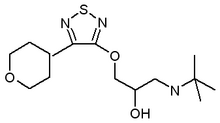Orbital encephaloceles are a rare complication of orbital roof fractures that generally occur after severe trauma. ' We report a case of an orbital encephalocele following minor trauma in the context of bilateral orbital roof fractures and orbital hematomas that clinically resembled a cavernous sinus thrombosis. To our knowledge, this finding has not been previously reported.
CASE REPORT
A 48-year-old man with a history of metastatic malignant melanoma presented with four-day history of increasing right periorbital edema and a one-day history of bilateral proptosis, mental status changes, fever, and vomiting. He had undergone a bifrontal craniotomy with intraoperative photoelectron radiation treatment for melanoma metastases one month prior. His medications included dexamethasone, phenytoin, and risperidone. He resided in a nursing home and had reportedly thrown himself out of his wheelchair on the day of presentation. On examination in the emetgency room, the patient was obtunded, and a visual acuity could not be obtained. Bilateral nonpulsatile proptosis with periorbital edema and erythema was noted. The pupils were 5 mm, round, and sluggishly reactive to light OU without an afferent defect. There were no spontaneous eye movements, and oculocephalic testing was contraindicated because of cervical collar immobilization. Bilateral chemosis and subconjunctival hemorrhages were evident. Intraocular pressures were elevated at 45 mm Hg in both eyes and did not improve after a lateral canthotomy and cantholysis (Figure 1A). Dilated fundus exam was remarkable for pink optic nerves with moderate disc swelling OD and sharp margins OS. Based on the patient's clinical presentation as well as his history of a recent craniotomy, radiation treatment, and increased risk of infection due to chronic steroid use, a cavernous sinus thrombosis was suspected.
Axial computed tomography (CT) showed a soft tissue density adjacent to the right optic nerve and bilateral tenting of the globes consistent with severe proptosis (Figure 1B). CT coronal reconstructions illustrated bilateral orbital roof fractures with displaced bone fragments and bilateral superior orbital hematomas (Figure 2A). Magnetic resonance imaging (MRI) identified the soft tissue mass seen on axial CT as herniated frontal lobe (Figure 2B) and did not demonstrate a cavernous sinus thrombosis. A lumbar puncture revealed an elevated opening pressure of 300 mm H2O.
During the patient's hospitalization, the intracranial pressure normalized after a ventriculostomy, and the intraocular pressures normalized with topical timolol, dorzolamide, latanoprost, and brimonidine. Blood and cerebrospinal fluid cultures were negative. The patient became afebrile on empiric antibiotics. Despite the CT findings suggestive of impending right optic nerve compression from the encephalocele, no afferent pupillary defect developed. Surgery was not performed due to widely metastatic disease. On hospital day 15, the patient died after withdrawal of ventilatory support. An autopsy was not performed.
COMMENT
The complications and presentations of orbital roof fractures are diverse. Sequelae include orbital deformities, ocular injury, extraocular muscle imbalance, blepharoptosis, and intracranial complications, 2 with orbital encephalocele being a rare complication following severe head trauma.1 In contrast, cavernous sinus thrombosis may present clinically with proptosis, chemosis, ophthalmoplegia, and elevated intraocular pressures along with fever, vomiting, and mental status changes. Unlike our patient, the two reported cases of bilateral roof fractures and unilateral encephalocele did not mimic a cavernous sinus thrombosis.1,3 Perhaps the unique combination of bilateral roof fractures with bilateral orbital liematomas and an orbital encephalocele in the setting of raised intracranial pressure was responsible for this patient's dramatic clinical presentation masquerading as a cavernous sinus thrombosis.
This patient's presentation was also unusual in that he developed an orbital encephalocele following relatively minor trauma after falling out of his wheelchair. Postsurgical and postradiation factors likely resulted in the loss of integrity of the bony roof, thereby increasing the risk of roof fractures after presumably minor head trauma. The fact that the patient's proptosis, mental status changes, fever, vomiting, and right periorbital edema started prior to his fall raised the suspicion of a cavernous sinus thrombosis at the time of presentation. Moreover, this chronology suggests the possibility that the frailty of the orbital bones from previous oncological treatment was actually the inciting factor in this case, with the fall only further compounding the problem.
This case demonstrates that orbital hematomas with an encephalocele in the setting of bilateral orbital roof fractures can mimic a cavernous sinus thrombosis. Prompt neuroimaging with both CT and MRI can lead to a definitive diagnosis. To our knowledge, this is the first case of an orbital encephalocele presenting with associated findings suggestive of a cavernous sinus thrombosis.
Presented in part as a poster at: Association for Research in Vision and Ophthalmology Annual Meeting, April 25-29, 2004, Fort Lauderdale, FL.
REFERENCES
1. Antonelli V, Cremonini AM, et al. Traumatic encephalocele related to orbital roof fractures: report of six cases and literature review. Surg Neural 2002;57:117-25.
2. McLachlan DL, Flanagan JC, Shannon GM. Complications of orbital roof fractures. Ophthalmol 1982;89:1274-87.
3. Sato O, Kamitani H, Kokunai T. Blow-in fracture of both orbital roofs caused by shear strain to the skull. J Neurosurg 1978;49:734-8.
MARJORIE A. MURPHY, MD, AND CATHERINE M. MEYERLE, MD
Majorie A. Murphy, MD, is a Clinical Associate Professor of Ophthalmology, Brown Medical School, and Director of NeuroOphthalmology at Rhode Island Hospital.
Catherine M. Meyerle, MD, is a resident in ophthalmology at Yale University School of Medicine. She participated in this case while she was at Rhode Island Hospital.
CORRESPONDENCE:
Marjorie A. Murphy, MD
Department of Ophthalmology
Rhode Island Hospital,
Ambulatory Patient Center 7th floor
593 Eddy Street
Providence, RI 02903
Phone: (401)444-4669
Fax: (401)444-6187
e-mail: MargieMurphy@cox.net
Copyright Rhode Island Medical Society Jun 2005
Provided by ProQuest Information and Learning Company. All rights Reserved



